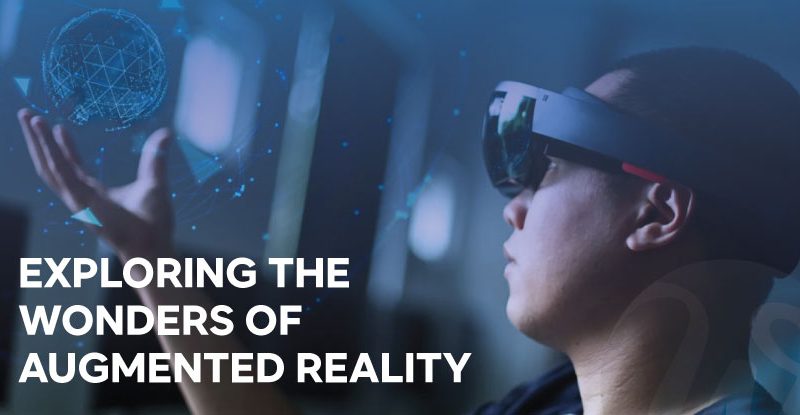Exploring the Wonders of Augmented Reality
Technology has recently pushed the limits of what we once believed possible. Augmented Reality (AR) is one such breakthrough that has captivated our interest. 3D models, films, and other digital content are superimposed on the physical environment using augmented reality (AR) technology. Although the idea has been around for a long, it has only recently gained widespread acceptance. In this blog, we’ll be Exploring the Wonders of Augmented Reality and how it’s changing the world.
What Is Augmented Reality?
Augmented Reality, often abbreviated as AR, is a technology that combines the physical world with digital information in real time. AR enriches the actual world by including computer-generated components, unlike Virtual Reality (VR), which immerses users in a virtual environment entirely. Smartphones, tablets, AR glasses, or dedicated AR headsets may all be used for this.
The Rise of AR Applications
AR applications have become increasingly popular and diverse. One of the most notable examples is the wildly successful mobile game Pokémon GO, which took the world by storm in 2016. The game uses AR technology to superimpose Pokémon characters into the real world, turning the simple act of catching virtual creatures into a global phenomenon. This showed the immense potential of AR for entertainment and gaming.
But AR goes beyond gaming. For instance, in healthcare, surgeons can use AR to overlay medical data and imaging onto a patient’s body during surgery, providing real-time guidance and improving precision. AR allows professionals to visualize and present 3D models of structures or room designs within existing spaces in architecture and interior design, helping clients better understand their projects.
-
The Use of AR in Education
AR has also made its way into education. It offers immersive learning experiences that can make complex topics more understandable. Imagine studying astronomy with an AR app that projects the stars and planets onto the night sky, providing detailed information as you explore the celestial bodies. Such applications can make learning engaging and interactive, particularly for younger generations.
-
Navigation with augmented reality
Navigation has become more intuitive with AR. Apps like Google Maps have integrated AR features that use your smartphone’s camera to overlay directions onto the real world. This makes it easier to navigate unfamiliar streets and find your way around, especially in urban environments.
-
Retail Augmented Reality
In the retail industry, AR is transforming the way we shop. Virtual try-on apps enable customers to “try on” clothes or accessories virtually, eliminating the need to visit a store physically. IKEA’s AR app allows you to place virtual furniture in your home to see how it fits before purchasing. This enhances the shopping experience and reduces the likelihood of making unsuitable purchases.
-
Augmented Reality and Art
Artists and museums are also embracing AR to create immersive and interactive experiences. AR art installations can transform a static painting or sculpture into a dynamic and ever-changing piece. Museums use AR to provide additional information about exhibits, making the visit more educational and engaging.
Challenges and Future Possibilities
While Exploring the Wonders of Augmented Reality proves that the wonders of AR are evident, there are still challenges to overcome. AR hardware needs to become more accessible and affordable for broader adoption. Privacy concerns also arise as AR applications can capture and analyze real-world data. Looking ahead, the future of AR is bright. We may anticipate even more cutting-edge uses as technology keeps developing. Imagine a world where you can attend a concert as a holographic audience member, collaborate on projects with colleagues from around the world in a shared AR workspace, or receive real-time translations of foreign languages through AR glasses during your travels. These possibilities, once the stuff of science fiction, are becoming increasingly feasible.
Final words
In conclusion, Augmented Reality is revolutionizing how we interact with the world. Its diverse applications range from entertainment and education to healthcare and navigation. As technology continues to evolve, so will AR, opening up new realms of possibility and transforming how we live, work, and play. It’s an exciting journey into the future, and the wonders of augmented reality are only just beginning to unfold.

